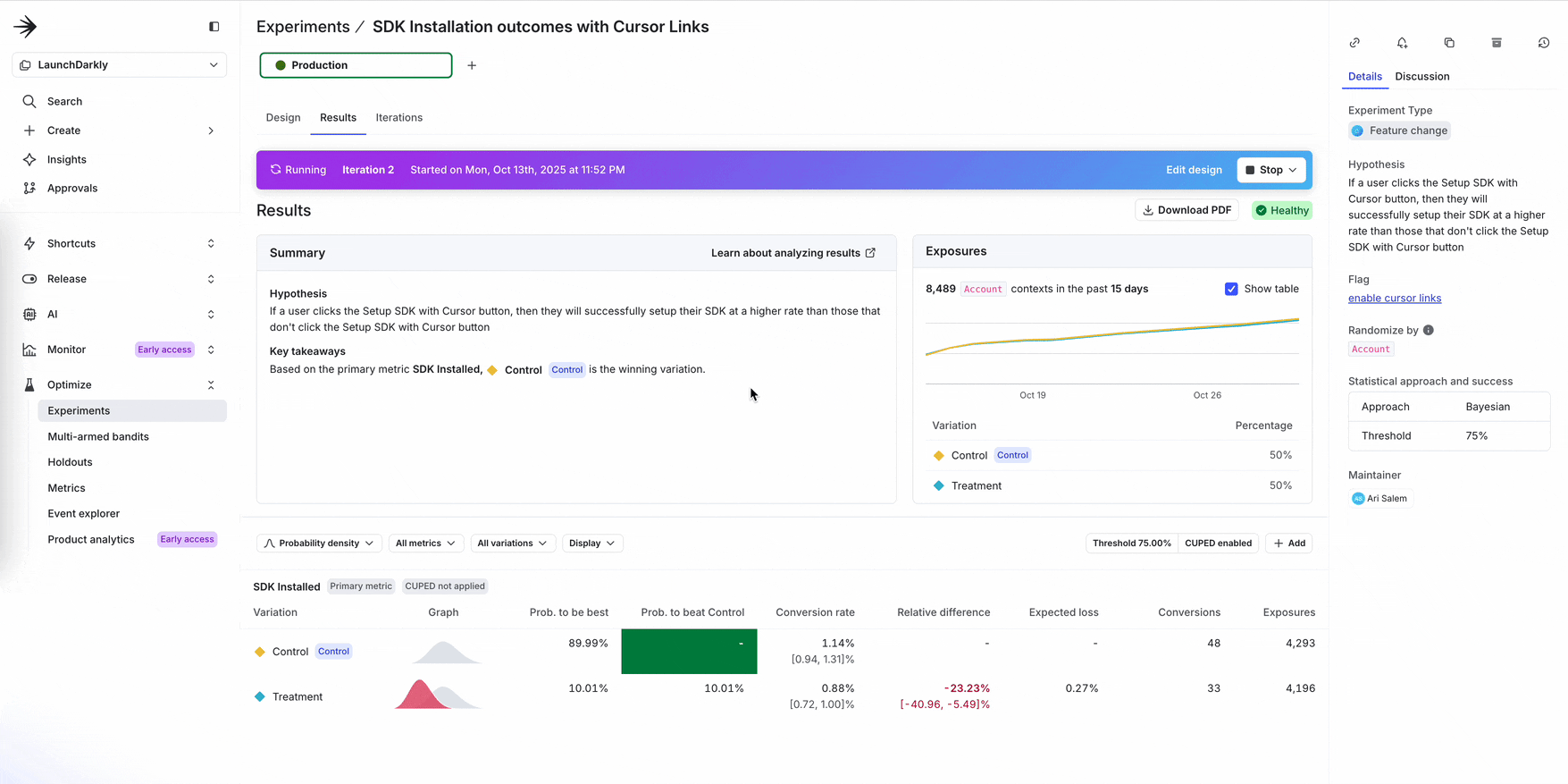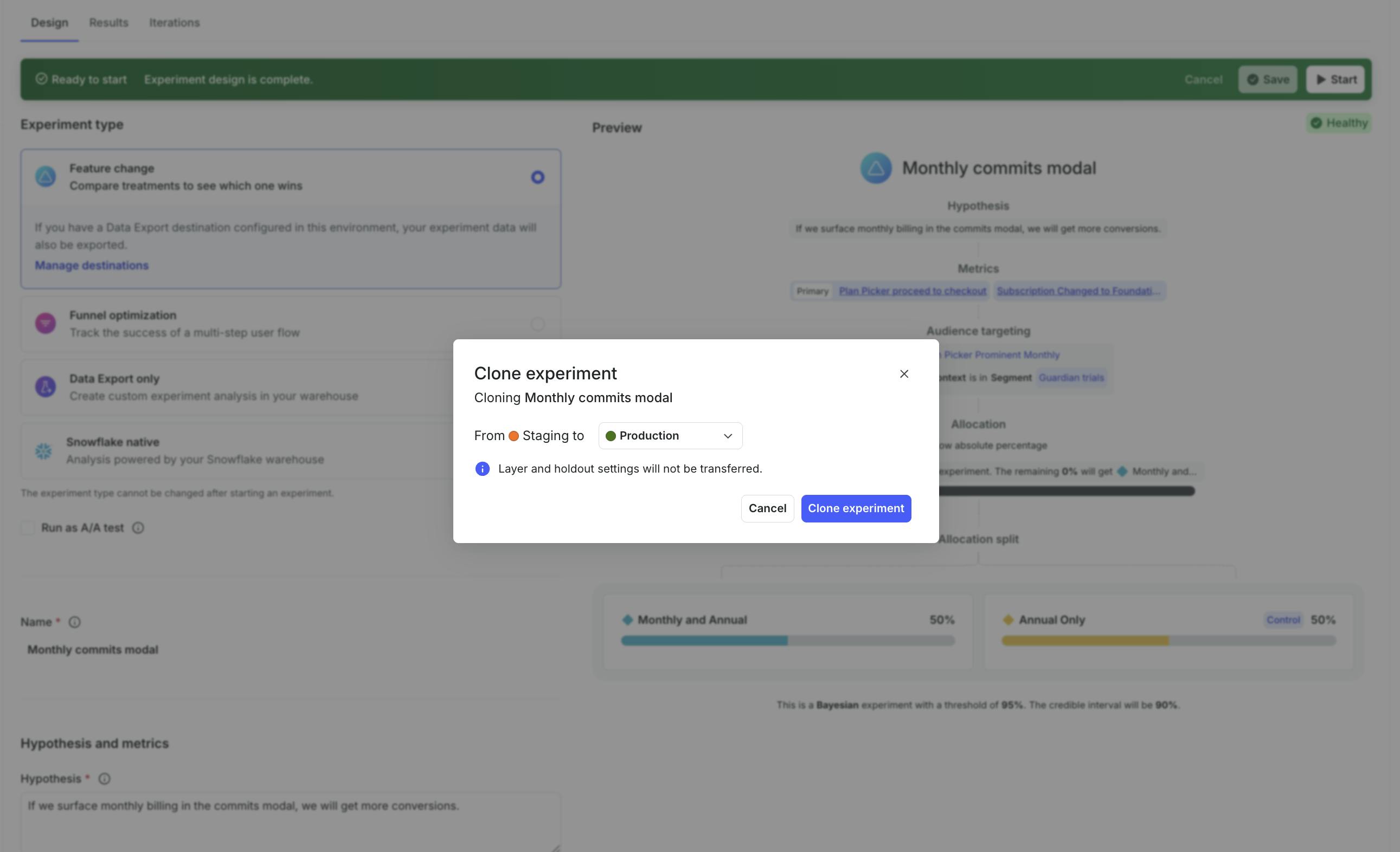Product experimentation is one of the best ways to validate your product decisions and roadmap. It measures new products, features, and even simple workflow tweaks against real user behavior and their impact on key metrics.
However, product experimentation is often slow and clunky because teams lack the necessary tools to help them succeed. Product managers are stuck chasing data, working in siloed tools, digging through Slack threads, or stitching together screenshots and screen recordings to explain what happened and why. We built LaunchDarkly Experimentation to change that.
Whether you're running a single test or scaling experimentation across teams, LaunchDarkly integrates easily into your release process and utilizes the same flags you already trust to ship features.
What’s new in Experimentation
We’ve added powerful new features to help product teams and their cross-functional partners measure what matters, build experiments more easily, and share results with less effort.
Explore these new features for yourself in our sandbox as you read along.
Measure what matters, when it matters
Now you can add metrics or attributes to any experiment, before, during, or after it runs. This way you don’t need to restart and you don’t lose progress; you just get the data insights you need to answer questions as they arise.
- Track new business metrics without starting a new iteration
- Slice results by additional attributes, even retroactively
- Analyze past experiments through a new lens

From collaboration to clarity
Decision summary write-ups
When an experiment ends, the real work begins: deciding what to do, documenting why, and sharing the outcomes with your stakeholders. The LaunchDarkly decision summary write-up makes that part easier, with a structured workflow to capture what happened, what you learned, and what comes next.
- Select a winning variation (or record that there wasn’t one)
- Add context, rationale, and next steps using rich text and markdown
- Keep decisions visible and accessible alongside your results

In-app discussion panel
Experiments require collaboration across product, engineering, and data teams, but often that collaboration takes place in siloed tools and workspaces. The new LaunchDarkly discussion panel lets you collaborate directly in the context of an experiment.
- Leave comments right inside the experiment
- Use @mentions to loop in teammates when input is needed
- Keep decisions and discussions tied to the data
- Build a persistent history of collaboration across the experiment lifecycle

PDF export
After your decision is documented, you can share it with just one click. PDF export enables you to generate a polished, stakeholder-ready summary, right from the LaunchDarkly UI.
- Export full experiment results, including charts, metrics, and metadata
- Include decision rationale and next steps in a clear, structured layout
- Ideal for async updates, exec reviews, audits, or retros

Smart setup and real time checks
Experiment health checks
Setting up experiments should be simple and painless. No one wants to wonder, "Did I set this up right?" LaunchDarkly gives you instant visibility into the health of your experiment configuration, so you don’t have to ping engineers or dig through logs just to confirm things are good. Health checks run automatically on every experiment, surfacing issues early:
- Is traffic flowing?
- Are users split evenly?
- Are metrics firing?
- Is the randomization unit correct?

Experiment cloning
Once you’ve configured and tested your experiment in Staging, there’s no reason to start from scratch. With experiment cloning, you can quickly recreate your experiment in Production to save time, reduce your chance for user error, and keep teams moving.
- Duplicate flags, metrics, targeting, and variations in just a few clicks
- Reuse proven setups across teams or segments
- Run similar experiments for different environments or audiences

Why this matters
Experimentation should inform product decisions, not create additional work or be skipped altogether due to the required overhead. We know how important it is to run experiments where your features already live, rather than in a separate tool.
Try these new features today, available to all Experimentation customers. Or check out our sandbox to explore what’s possible.





